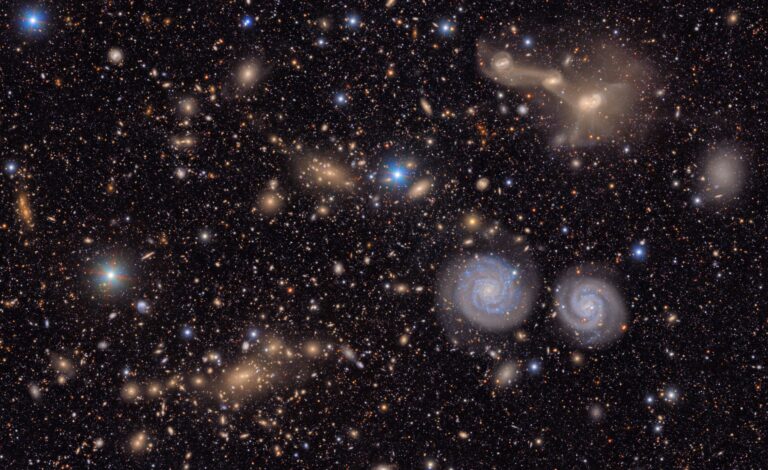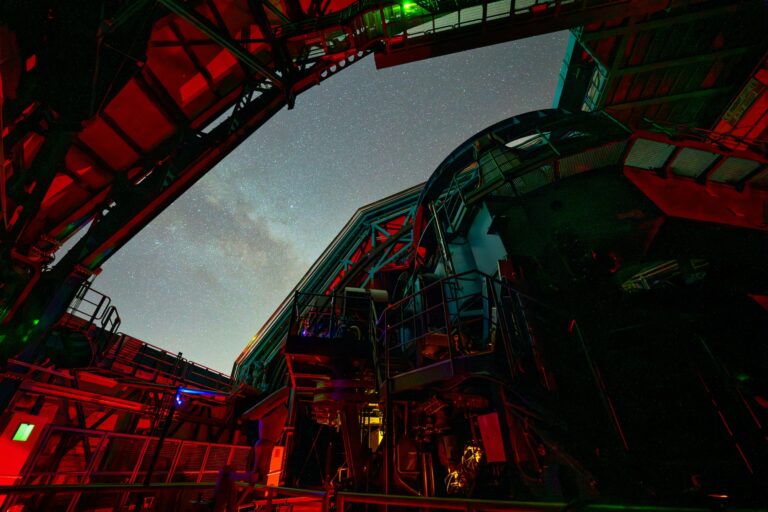
The most refined and comprehensive version of the technique that discovered dark energy has returned a new result that scientists are calling “tantalizing,” potentially hinting that dark energy may not be as constant as generally assumed.
This findings come from the Dark Energy Survey (DES), a six-year effort to survey hundreds of million galaxies in the southern skies. The project stopped collecting data in 2019, but researchers are still analyzing it, including nearly 1,500 type Ia supernovae — a type of stellar explosion that always has the same brightness. This allows researchers to measure the vast distances to their host galaxies, up to billions of light-years away.
The new analysis reaffirms — with greater confidence — that the universe’s expansion is accelerating due to some unknown source of energy that comprises 70 percent of the universe, which astronomers call dark energy. And in their analysis, the way that the rate of this expansion ramps up is a close fit to the simplest and most accepted model of dark energy, called lambda cold dark matter (ΛCDM), in which the density of dark energy is constant and never changes.
But it’s not quite an exact fit — and that’s where the intrigue lies.
“There are tantalizing hints that dark energy changes with time,” said Tamara Davis, an astronomer at the University of Queensland in Australia, in a statement. “We find that the simplest model of dark energy — ΛCDM — is not the best fit. It’s not so far off that we’ve ruled it out, but in the quest to understand what is accelerating the expansion of the universe this is an intriguing new piece of the puzzle. A more complex explanation might be needed.”
The work was presented at the winter meeting of the American Astronomical Society (AAS) in New Orleans Jan. 8, the same day a draft of the paper was posted on the arXiv preprint server.
Alternative models
The new study is the most comprehensive attempt to measure the expansion of the universe using type Ia supernovae, making use of data collected by DES at the Victor M. Blanco 4-meter Telescope in Chile. Type Ia supernovae can occur when a white dwarf star in a binary system draws close enough to its companion to suck matter off of it. If a white dwarf reaches a critical mass — roughly 1.4 times that of the Sun — it can no longer support its own weight and explodes in a runaway thermonuclear reaction. Because physics dictate that this happens at the same mass, type Ia supernova are all about the same brightness. This means that when one goes off in a distant galaxy, we can measure the distance to that galaxy: The dimmer the type Ia supernova is, the farther the galaxy.
This technique is what allowed researchers to discover in the late 1990s that the universe is not just expanding, but that its expansion is accelerating. Since then, researchers have continued to search for type Ia supernovae in order to more precisely measure just how quickly this acceleration is occurring — and to match that to their cosmological models.
In the standard cosmological model of ΛCDM, lambda is a parameter known as the cosmological constant. In ΛCDM, dark energy fills the universe at a fixed density, never becoming more or less concentrated, even as the universe expands.
But the team considered an alternative model, called wCDM, in which w is allowed to vary. When w = –1, the model simplifies to plain ΛCDM. But if it’s anything other than –1, dark energy may be changing over time. A w that is less than –1 means that the density of dark energy inexorably increases over time, leading to the expansion of the universe tearing everything in it apart in a scenario called the Big Rip. By contrast, a w greater than –1 (but less than 0) corresponds to dark energy dissipating somewhat over time, though still driving an accelerating universe.
The team found that the best fit to their supernovae data is w = –0.80 with an uncertainty of 0.15. By combining their results with other indicators like the cosmic microwave background, the team could reduce the error bars, arriving at w = –0.941, plus or minus 0.026.

“So we’re consistent [with ΛCDM], but we’re a little bit less consistent,” said Philip Wiseman, an astronomer at the University of Southampton, as he presented the work Jan. 8 at the AAS meeting. “This is what we, I think, are describing as ‘tantalizing.’”
Statistically speaking, the significance of the discrepancy is just over 2 sigma, meaning it still falls well within what scientists would consider the margin of error. Many 2-sigma results amount to nothing; in physics, a 5-sigma detection is considered the gold standard.
But cosmologists are already finding their models struggling to reconcile observations of the universe. In recent years, they have grappled with multiple tensions over cosmological parameters for which observations derived from different eras of the universe disagree. So the idea that dark energy may prove to be more complicated than vanilla ΛCDM is one that some cosmologists are at least open to considering.
Increasing precision
To increase the precision of the measurement, more type Ia supernovae will be needed — and they should be coming in the next five to 10 years, thanks to upcoming surveys from the Vera C. Rubin Observatory, the Nancy Grace Roman Space Telescope, and Europe’s just-commissioned Euclid space telescope.
“So with the future surveys and those numbers — pure, pure numbers of supernovae coming along — they’ll be able to really shrink those [error bars] down as well,” Wiseman said as he presented the work Jan. 8 at the AAS meeting.
“I’m extremely interested to see what independent experiments come up with,” Richard Kron, an astronomer at the University of Chicago and DES’ project director at Fermilab, told Astronomy. “This is the way it tends to work: You get a 2-sigma result, and that’s not very interesting. But if you have five other experiments that also get 2-sigma results, and they’re all in the same direction, then this starts to become interesting.”









